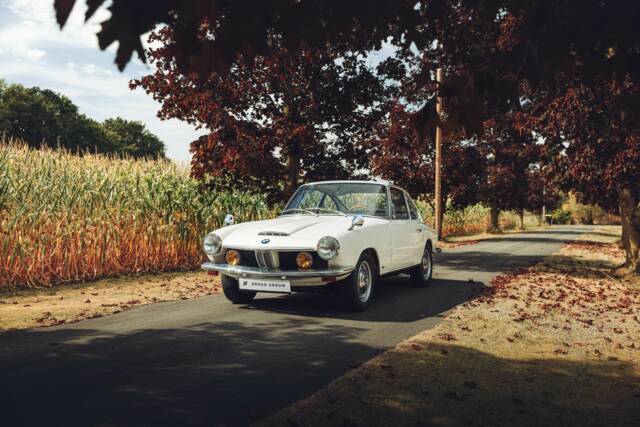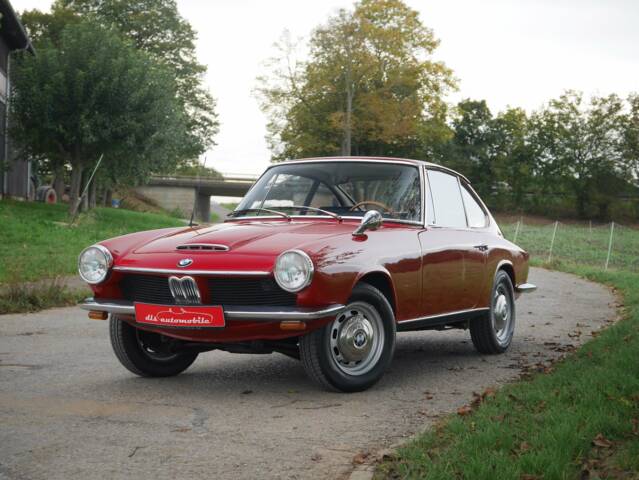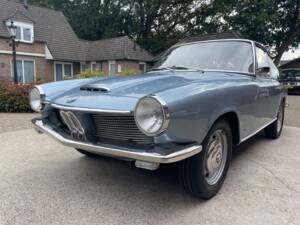BMW Glas Classic Cars for Sale
The BMW Glas series is renowned for its unique blend of Italian design and Bavarian engineering, with fruitful collaborations between Glas, BMW, and celebrated designers Frua and Michelotti. The rare BMW 1600 GT and 2600/3000 V8 models stand out for their spirited engines, streamlined coupe silhouettes, and sporting chassis, capturing a pivotal era in both companies’ histories.
Search results



1968 | BMW 1600 GT
BMW 1600 GT Frua Coupé // seit 11.1968 in einer Damenhand // komplette Historie!
History of the BMW Glas Series
BMW’s Glas series traces its roots to Hans Glas GmbH, a company that built affordable, compact cars and motorcycles before being acquired by BMW in 1966. The collaboration ushered in a new lineup marked by bold stylistic choices and innovative engineering. Notably, the Glas 2600 V8 unveiled in 1965 amazed the public with its Maserati-reminiscent design, earning the moniker 'Glaserati.' Following the BMW acquisition, the evolution continued with the 3000 V8 and 1600 GT, the latter marrying Italian coupe aesthetics with the robust, rev-hungry BMW ti engine. Production numbers for each model remained extremely low: estimates for the V8 range put output at around 700 cars, while approximately 1,250 units of the BMW-badged 1600 GT rolled off the line before production ceased.
Model History
The Glas history began with Hans Glas’s gradual move from tractors to microcars and compacts in post-war Germany. The pivotal moment was the creation of the Glas GT and its V8-powered successors. With the BMW Glasgow, we see the transition: in 1966, BMW incorporated Glas, updating the 1600 GT with new front axles, distinctive 'kidney' grille, and the signature 1.6-litre BMW engine. Predecessors include the original Glas GT models—1300 and 1700 GT—along with the V8-powered coupes. Successors emerged as BMW focused on the 02 series and the classic CS coupés, effectively ending the Glas-badged era in 1968 due to internal model competition.
Features and Rarity of the BMW Glas Series
Key hallmarks of the Glas series include its elegant, flowing coachwork by Frua (GT, V8 Coupé) and Michelotti (1600 GT), the advanced suspension geometry, and pioneering use of components from other luxury German marques. The BMW 1600 GT introduced a nimble, lightweight coupe experience with a 105 PS twin-carburaetted BMW engine, notable for its zest and agility. Meanwhile, the Glas V8s utilised a unique V8 engine built by effectively doubling Glas’s proven 4-cylinder units, paired with a self-levelling suspension—an anomaly among German offerings of the era. Finished often in rare shades such as 'Bristol', these cars feature extensive original details (from Setra bus headlights to Porsche 911 door locks), further adding to their engaging complexity.
Technical Data
Special Editions and Collector Models
The BMW 1600 GT is itself a rarity, with only about 1,250 built under the BMW badge, and is most prized in original 'Bristol' paintwork. The Glas 2600/3000 V8, informally known as 'Glaserati,' also counts as a special due to its very limited production—the exact number is elusive but likely under 700. No other officially designated factory special editions are documented.
Weak Spots and Known Issues
Common issues for Glas-based BMWs include wear-related gremlins in the complex rear suspension, timing-related wear from long-standing twin-cam V8 configurations, and sourcing rare body or trim parts due to minuscule production numbers. Corrosion in the floor pans and lower bodywork must also be checked, especially in models without historic restoration. For the 1600 GT, the twin carburettors require precise tuning, and the front suspension demands attention to bushings and pivot points after decades of use.
Engine, Transmission and Driving Dynamics
The 1.6-litre BMW engine in the 1600 GT is lively, famously free-revving, and paired to a brisk-shifting 4-speed manual. The car is appreciated for nimble, playful handling—especially after BMW revised the suspension. The V8 Glas models, meanwhile, deliver surprisingly modern-feeling thrust coupled with genuine long-distance comfort thanks to self-levelling rear suspension, a rarity for the mid-1960s. 1. BMW 1600 GT - 105 PS, ~980 kg, 4-speed manual. 2. Glas 2600/3000 V8 Coupé ('Glaserati') – V8, 2,580-3,000 cc, 150–160 PS, disc brakes all round, Italian Frua bodywork.
Interior, Comfort, Exterior and Design Features
The BMW Glas series embodies a measured fusion of Italian sensibility with sober German engineering. Pietro Frua’s designs—particularly for the V8 Coupé—emphasise stretched bonnets, slender rooflines, and minimal overhangs. Giovanni Michelotti’s work on the 1600 GT results in tight, flowing lines, a clean coupe profile, and a cockpit clad in black with period-correct ergonomics. Details such as the prominent kidney grille, round or quad headlights, and special colour options (e.g. 'Bristol') distinguish these coupe classics. Most vehicles retain authentic, original trim, including rare upholstery fabric and in-period switchgear, reaffirming the Glas BMW’s authenticity.
Other Noteworthy Features
Many Glas BMWs feature a mixture of sourced parts from Mercedes, Porsche, and Setra, leading to unique component blends not seen elsewhere in the BMW range. The introduction of the self-levelling suspension and niche manufacture means service parts may require extensive sourcing. These models stand out as an important connector between Italian design and the evolution of BMW coupé DNA.
Summary
The BMW Glas series, covering the 1600 GT and Glas 2600/3000 V8, represents a critical innovation point in mid-century European car design. With German engineering purity meeting Italian style, limited production, and genuine mechanical interest—these classics reward the knowledgeable enthusiast with a driving and ownership experience found nowhere else in the Bavarian marque’s lineage.


